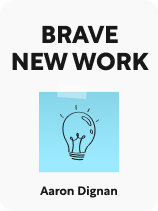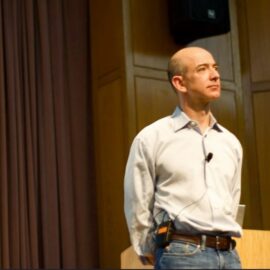

This article is an excerpt from the Shortform book guide to "Brave New Work" by Aaron Dignan. Shortform has the world's best summaries and analyses of books you should be reading.
Like this article? Sign up for a free trial here.
What is Integrative Decision-Making? Why is democracy important at work?
If you want to integrate autonomy and flexibility into an organization, you need to facilitate a democratic process. According to Aaron Dignan’s book Brave New Work, a key way to do this is by using a consent process such as Integrative Decision-Making.
Discover what Integrative Decision-Making means and how it can improve work culture.
Establishing a Consent Process
In addition to psychological safety, establishing a consent process is another important early step for integrating autonomy and flexibility into an organization. The consent process is meant to enable workers to shape structural change from within, rather than to create an additional hurdle for people to get things done.
To facilitate a democratic process, Dignan recommends using a consent process such as Sociocracy or Integrative Decision-Making (IDM).
In the IDM process, each participant has the opportunity to speak and give input on a proposal. Toward the end of the process, participants can either consent to the proposal or raise an objection if they think the proposal is either unsafe to try or would cause irreversible harm. Any objectors then work with the proposer to edit the proposal to get consent to move forward. In a system such as this, the decision-making process is inclusive, but it’s also designed to make progress rather than having ideas thrown out if there’s no consensus.
(Shortform note: IDM is also commonly referred to as Holacracy. HolacracyOne is the company that formalized IDM, and IDM is actually a procedure that fits within the overarching philosophy of Holacracy.)
| Challenges of Implementing Holacracy Although several major businesses and organizations have experimented with Holacracy, some have experienced challenges with it that Dignan doesn’t discuss. For example, the shoe company Zappos adopted Holacracy and later offered employees severance packages if they didn’t like the self-management system or wanted to leave the company for a different reason. Eighteen percent took the severance package and 6% of employees said that Holacracy was a specific motivator for quitting. Some people said there was too much ambiguity around the work processes and responsibilities, or that not much had changed about the way work was done despite meetings and trainings. However, it’s difficult to determine what factors may have led to these perceived shortcomings for some employees, and Zappos continues to evolve and use Holacracy throughout the company. In another example, the publishing company Medium tried Holacracy and then ended the practice because it was too difficult to coordinate efforts for larger projects across company groups, and public perceptions of Holacracy made recruiting employees more difficult. |
Meta Decision-Making
Your decision-making process can help you clarify different levels of decision-making power: what decisions people can make independently in their day-to-day work, what decisions require seeking advice from a peer, and what kinds of decisions require the group’s consent.
For example, someone might be able to change strategies on their project or purchase a piece of necessary equipment without asking anyone. However, if a person wants to form an entirely new team to work on a project, the group may recommend seeking advice from another colleague first. And if someone wants to restructure the company’s salary system, this may require using the decision-making method described above to get the entire group’s consent.
(Shortform note: In contrast to Dignan’s preference for different layers of decision-making power, Laloux’s Reinventing Organizations advocates letting employees make any decision on their own, as long as they seek advice from the people impacted by the decision first. Laloux points out that transparent information and the advice-seeking process are key to helping people make informed decisions. Similarly, Reed Hastings and Erin Meyer’s No Rules Rules emphasizes the importance of making company information transparent so that employees can make autonomous decisions.)Dignan points out that this consent process doesn’t have to be set in stone—using these methods, participants can also consent to a different decision-making process, like delegating authority to a sub-group.
| Dignan’s Goals Parallel Those of Holacracy The official mission of the Holacracy governance system closely mirrors Dignan’s overall vision for organizations. Both are focused on complex, human systems and aim to decrease hierarchy management, increase employee engagement, and distribute authority widely through dynamic roles. Both philosophies recommend tailoring strategies to the unique context of the organization based on these overarching principles. Similar to Dignan’s recommendations for constant, iterative experimentation (discussed later in the guide), Holacracy recommends “incremental evolution” to adapt to new challenges. However, Dignan also discusses more specific strategies and experiments, not limited to Holacracy, that have been successful in revolutionizing businesses. For example, Dignan recommends experiments like letting employees set their own salaries and write their own job descriptions. |

———End of Preview———
Like what you just read? Read the rest of the world's best book summary and analysis of Aaron Dignan's "Brave New Work" at Shortform.
Here's what you'll find in our full Brave New Work summary:
- How organizations can adapt to the rapid pace of change in the modern world
- Why old organizational structures don't work anymore
- How to enable organizations to run themselves through decentralized work






